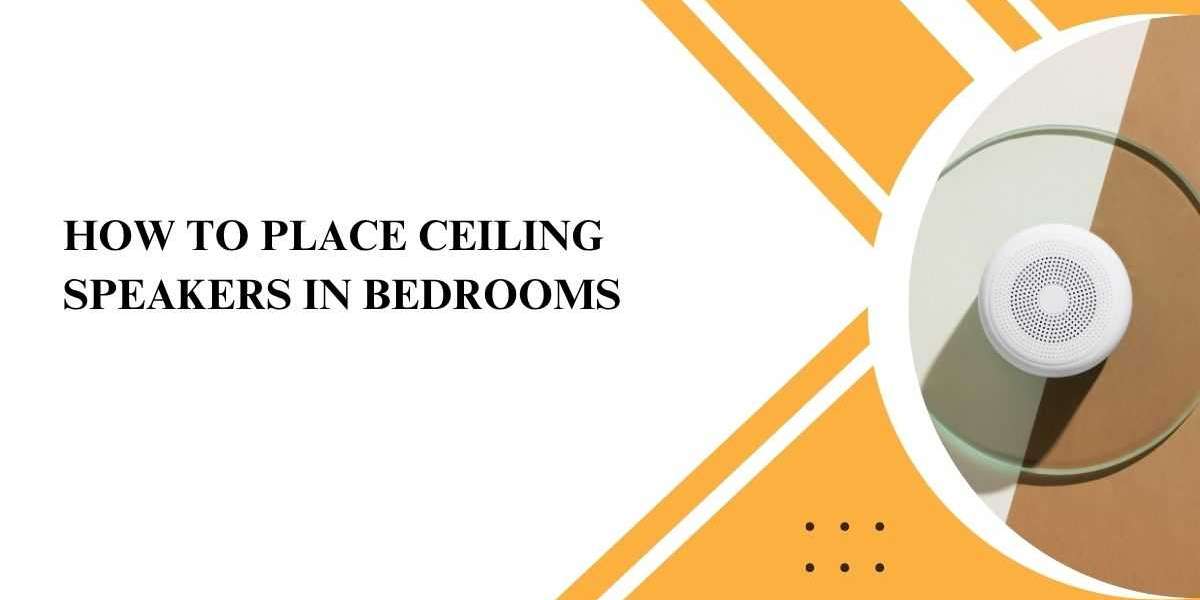The modern bedroom is no longer just a place to sleep. It has become a space for relaxation, entertainment, meditation, and even work. From listening to music in the morning to enjoying calming audio at night, having high-quality sound in the bedroom adds immense value to comfort and lifestyle. Ceiling speakers offer a clean, elegant solution to deliver immersive sound without cluttering the room with bulky equipment. However, the key to achieving balanced and clear audio lies in proper Ceiling Speaker Placement.
XTEN-AV provides the tools needed to plan and execute a flawless ceiling speaker layout, ensuring that audio systems in bedrooms are both functional and aesthetically pleasing. With intelligent design automation, speaker placement simulation, and real-time collaboration features, XTEN-AV makes it easy to create smart, personalized AV solutions for residential spaces.
In this blog, we will guide you through how to place ceiling speakers in bedrooms to deliver the best sound experience without disrupting the cozy atmosphere of the space.
Why Choose Ceiling Speakers in Bedrooms
Ceiling speakers are an ideal choice for bedrooms because they:
Save space by staying out of sight
Offer even sound coverage across the room
Pair well with smart home systems
Enhance the mood with music or ambient sounds
Allow clean, wire-free installations
Whether it is for relaxing playlists, audio books, or connecting to a home theater system in a master suite, ceiling speakers elevate the bedroom experience with minimal visual impact.
But as with any AV project, performance depends heavily on correct Ceiling Speaker Placement.
Step 1: Understand the Room Layout
Before placing any speakers, assess the bedroom’s dimensions and layout. Consider the position of the bed, windows, doors, furniture, ceiling height, and materials.
Bedrooms typically range between 120 to 300 square feet. The placement of ceiling speakers should account for how sound will interact with the space, including any soft surfaces like curtains, carpets, or upholstered headboards that absorb sound.
Using XTEN-AV, you can upload the bedroom layout or create a scaled drawing that includes all room elements to begin accurate speaker planning.
Step 2: Identify the Listening Area
In most bedrooms, the primary listening position is the bed. Whether users are sitting up or lying down, the speakers should be positioned to deliver even sound coverage to this zone without being too loud or too distant.
Avoid placing speakers directly above the headboard. This can create uncomfortably loud audio for anyone lying down. Instead, place the speakers slightly in front of the bed, aimed to project sound evenly across the room.
Step 3: Determine the Number of Speakers
Small to medium bedrooms generally need only two ceiling speakers. Larger bedrooms, or rooms with irregular shapes or open sitting areas, may require four or more for full coverage.
The number of speakers should be based on room size, ceiling height, and desired audio quality.
Recommended guidelines:
Up to 150 sq ft: 2 speakers
150–300 sq ft: 2–4 speakers
Over 300 sq ft or open-plan master suite: 4+ speakers with zoning
With XTEN-AV’s intelligent layout tools, you can place and test different speaker quantities and spacing before installation.
Step 4: Follow Spacing and Placement Rules
Use the ceiling height as a guide for speaker spacing. For standard 8 to 10-foot ceilings, speakers should be spaced about 6 to 10 feet apart.
Key tips:
Maintain symmetrical placement relative to the bed and seating area
Ensure speaker cones slightly overlap for even sound
Avoid placing speakers too close to walls or corners
Avoid placing speakers directly above lights or air vents
Ceiling Speaker Placement should ensure that sound flows across the room smoothly, without volume spikes or gaps. XTEN-AV lets you visualize these details with SPL heatmaps and dispersion overlays.
Step 5: Consider Zoning and Control
Some larger bedrooms feature walk-in closets, reading nooks, or attached bathrooms. These spaces can benefit from additional speakers or separate audio zones.
Use zoning to control volume levels independently. For example, the main bedroom area can play relaxing music while the bathroom plays energetic morning playlists.
XTEN-AV allows you to define and design multi-zone audio systems with corresponding control interfaces and amplifier connections.
Step 6: Match the System with Smart Controls
Many modern bedrooms use voice control systems like Alexa, Google Home, or integrated control apps to manage lighting, climate, and audio. Ceiling speakers should be integrated into this ecosystem for convenience.
Make sure the chosen amplifier or AV receiver supports smart home protocols and can easily be operated from a smartphone or touch panel. XTEN-AV includes signal flow planning features to help you map and document control system integration.
Step 7: Use the Right Speaker Type
Choose ceiling speakers that fit the bedroom environment. In most cases, in-ceiling stereo speakers or two-way speakers with built-in tweeters work well.
Consider moisture-resistant models for speakers placed near bathrooms. Also, look for speakers with adjustable tweeters if fine-tuning directionality is needed.
XTEN-AV’s product library includes hundreds of ceiling speaker models from leading brands, so you can choose the best option based on specifications and application.
Common Mistakes to Avoid
Placing speakers too close together or too far apart
Overloading small rooms with too many speakers
Ignoring the position of furniture and sleeping areas
Installing without simulation or testing coverage
By using XTEN-AV’s simulation features, you can easily avoid these issues and optimize your layout before any physical installation begins.
Final Checklist
Upload or create a bedroom layout
Identify listening areas and obstacles
Choose speaker models and placement locations
Run audio coverage simulations
Define audio zones and controls
Generate installation documentation
Conclusion
Ceiling speakers can transform a simple bedroom into a luxurious, smart audio retreat. But to get the best results, proper Ceiling Speaker Placement is essential. With thoughtful planning, the right equipment, and smart tools like XTEN-AV, you can create a comfortable and immersive audio environment tailored to how the bedroom is used.
XTEN-AV empowers AV integrators and designers to go beyond basic installation and deliver professional-grade solutions with speed and accuracy. For your next bedroom AV project, start with smart design—and let the sound speak for itself.
Read more: https://enkling.com/read-blog/22339



